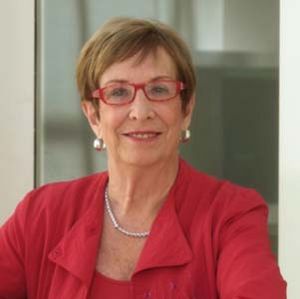Suzanne Corkin facts for kids
Quick facts for kids
Suzanne Corkin
|
|
|---|---|
 |
|
| Born |
Suzanne Hammond
May 18, 1937 Hartford, Connecticut, U.S.
|
| Died | May 24, 2016 (aged 79) Danvers, Massachusetts, U.S.
|
| Nationality | American |
| Alma mater | Smith College (B.A.) McGill University (M.Sc., Ph.D.) |
| Known for | Studies of human memory; work with H.M. |
| Spouse(s) | Charles Corkin (divorced) |
| Children | 3 |
| Scientific career | |
| Fields | Neuroscience Psychology |
| Institutions | Massachusetts Institute of Technology |
| Thesis | Somesthetic function after focal cerebral damage in man (1964) |
| Doctoral advisor | Brenda Milner |
| Doctoral students | John Gabrieli Christopher I. Moore |
| Other notable students | Neal J. Cohen (postdoc) |
Suzanne Corkin (born May 18, 1937 – died May 24, 2016) was an American professor. She taught neuroscience at the Massachusetts Institute of Technology (MIT). She was a top expert in how the brain affects our thoughts and actions.
Professor Corkin was famous for her work on human memory. She studied people with conditions like Alzheimer's disease, Parkinson's disease, and amnesia. She also spent many years studying a special patient known as H.M.. She met H.M. in 1962 and continued to study him until he passed away in 2008.
| Top - 0-9 A B C D E F G H I J K L M N O P Q R S T U V W X Y Z |
Early life and education
Suzanne Janet Hammond was born in Hartford, Connecticut. She was the only child of Lester and Mabelle Dowling Hammond. She went to Smith College in Massachusetts to study psychology.
Later, she earned her PhD at McGill University in Montreal, Canada. Her supervisor was Brenda Milner, another famous scientist. Milner was studying a man named Henry Molaison (H.M.). He had severe memory loss after brain surgery for seizures.
Suzanne Corkin met H.M. in 1962. She tested his memory, especially how he remembered things using his sense of touch. This research became the topic of her PhD paper.
Career at MIT
After finishing her PhD in 1964, Suzanne Corkin moved to the Massachusetts Institute of Technology (MIT). She joined the lab of Hans-Lukas Teuber. When Teuber died in 1977, Corkin took over his lab.
In 1981, she became an Associate Professor. From then on, she led the Behavioral Neuroscience Laboratory. She made many important discoveries about how the brain works.
Understanding memory
Professor Corkin helped us understand different types of memory. She studied how memory problems affect people with Parkinson's disease and Alzheimer's disease. Her work also explored how our brains store old memories.
She was one of the first scientists to use brain imaging. This technology helps us see what parts of the brain are active. She used it to study how memory works and how it changes as people get older or sick.
Work with H.M.
Suzanne Corkin continued to work with H.M. for many years. She kept his identity a secret to protect his privacy. After he died in 2008, his real name, Henry Molaison, was shared.
She wrote a book in 2013 called Permanent Present Tense. In this book, she shared the story of H.M. and her research with him.
Mentoring future scientists
Professor Corkin was known for supporting women and minority groups in science. She advised new students at MIT for 17 years. She also served on many important committees at the university.
In 2011, she received an award for her excellent work advising undergraduate students. She helped many young people start their careers in science.
Personal life
Suzanne Corkin was married to Charles Corkin, but they later divorced. She passed away from liver cancer in Danvers, Massachusetts. This was on May 24, 2016, a few days after her 79th birthday. She had three children: Damon, J. Zachary, and Jocelyn Corkin. She also had seven grandchildren.
See also
 In Spanish: Suzanne Corkin para niños
In Spanish: Suzanne Corkin para niños

